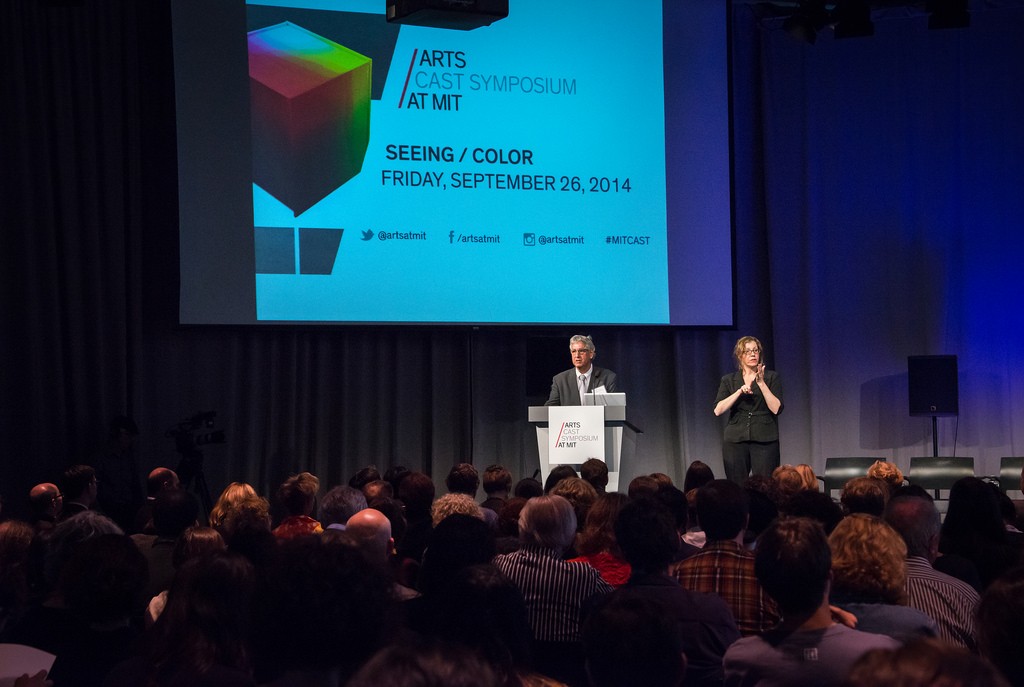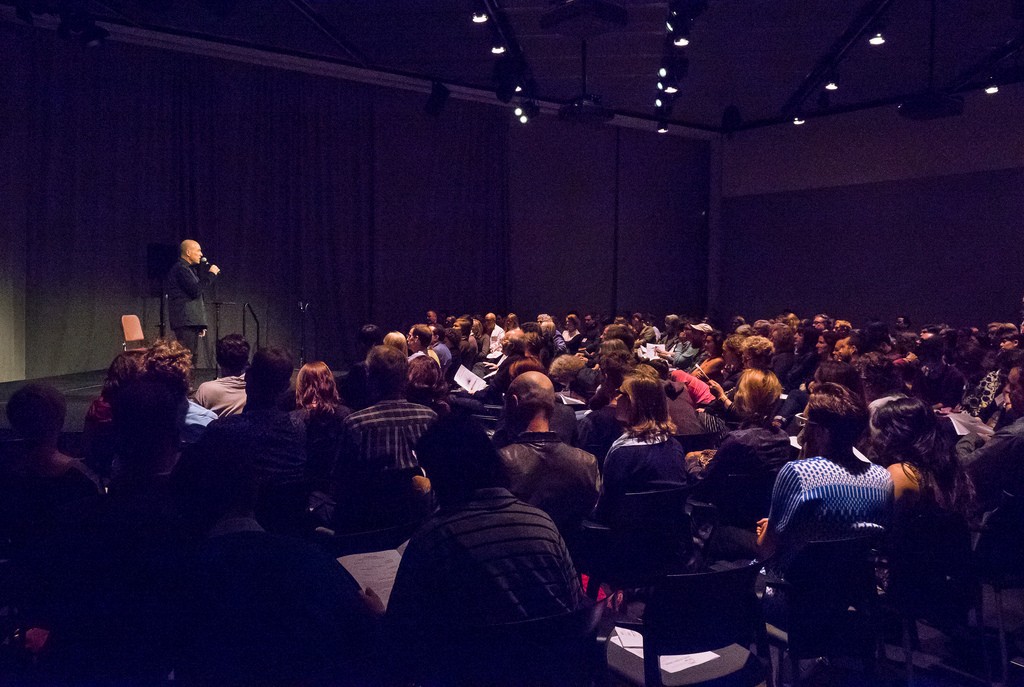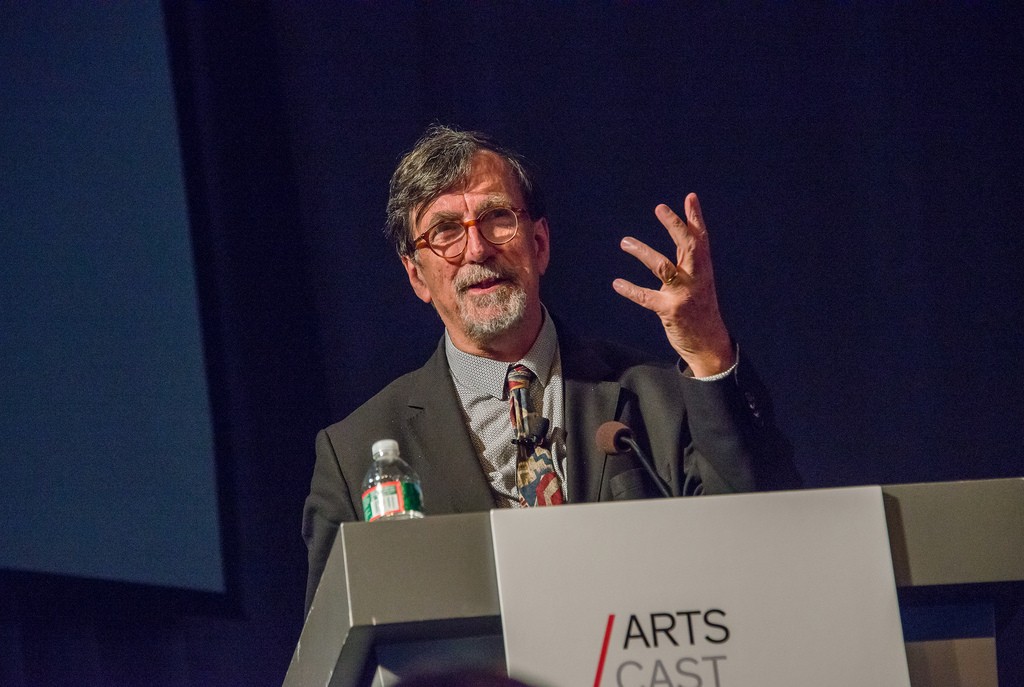A high-octane debate has broken out among the world’s physicists about what would happen if you jumped into a black hole, a fearsome gravitational monster that can swallow matter, energy and even light. You would die, of course, but how? Crushed smaller than a dust mote by monstrous gravity, as astronomers and science fiction writers have been telling us for decades? Or flash-fried by a firewall of energy, as an alarming new calculation seems to indicate?
This dire-sounding debate has spawned a profusion of papers, blog posts and workshops over the last year. At stake is not Einstein’s reputation, which is after all secure, or even the efficacy of our iPhones, but perhaps the basis of his general theory of relativity, the theory of gravity, on which our understanding of the universe is based. Or some other fundamental long-established principle of nature might have to be abandoned, but physicists don’t agree on which one, and they have been flip-flopping and changing positions almost weekly, with no resolution in sight.
“I was a yo-yo on this,” said one of the more prolific authors in the field,
Leonard Susskind of Stanford. He paused and added, “I haven’t changed my mind in a few months now.”
Raphael Bousso, a theorist at the University of California, Berkeley, said, “I’ve never been so surprised. I don’t know what to expect.”
You might wonder who cares, especially if encountering a black hole is not on your calendar. But some of the basic tenets of modern science and of Einstein’s theory are at stake in the “firewall paradox,” as it is known.
“It points to something missing in our understanding of gravity,” said Joseph Polchinski, of the Kavli Institute for Theoretical Physics in Santa Barbara, Calif., one of the
theorists who set off this confusion.
Down this rabbit hole are many of the jazzy magical mysteries of modern physics: Black holes. The shortcuts through space and time called wormholes. Quantum entanglement, also known as spooky action at a distance, in which particles separated by light-years can still instantaneously appear to remain connected. The reward for going down this hole could be a new understanding of why we think we live in a universe with space and time at all, with suitably unpredictable consequences. After all, if Einstein hadn’t been troubled a century ago by logical inconsistencies in the Newtonian universe, we might not have GPS systems, which rely on his theory of general relativity to keep time, in our pockets today.
Falling Bodies
Black holes are the most extreme predictions of Einstein’s theory, which describes how matter and energy warp the geometry of space and time the way a heavy sleeper causes a mattress to sag. Too much matter and energy in one place could cause space to sag so far that the matter inside it would disappear as if behind a magician’s cloak, collapsing endlessly to a point of infinite density known as a singularity. Einstein thought that idea was ridiculous when it was pointed out to him at the time, in 1916, but today astronomers agree that the universe is speckled with such dark monsters, including beasts lurking in the hearts of most galaxies that are millions and billions of time more massive than the Sun. Many of them resulted from the collapse of dead stars.
General relativity is based on what Einstein later called his “happiest thought,” that a freely falling person would not feel his weight. It is known simply as the equivalence principle; it says that empty space looks the same everywhere and to everyone.
One consequence of this principle is that an astronaut would not feel anything special happening when he fell through the point of no return, known as the event horizon, into a black hole. Like a bungee jumper, he would feel weightless then and all the way until he hit the bottom, which could take seconds or years depending on how big the hole was, and he would be stretched like a noodle by tidal forces and then crushed into a speck. At the event horizon there would be “no drama,” in the lexicon — at least in the physical sense, as opposed to the intellectual trauma of knowing you were not ever going home. Things or people went in, they got crushed to infinite density and disappeared. That was the traditional view of black holes.
Things got more interesting, however, in 1974 when Stephen Hawking, the British cosmologist, stunned the world by showing that when the paradoxical quantum laws that describe subatomic behavior were taken into account, black holes would leak particles and radiation, and in fact eventually explode, although for a hole the mass of a star it would take longer than the age of the universe.
This was a breakthrough in combining general relativity, the gravity that curves the cosmos, with quantum theory, which describes the microscopic quirkiness inside it, but there was a big hitch. Dr. Hawking concluded that the radiation coming from a black hole would be completely random, conveying no information about what had fallen into it. When the black hole finally exploded, all that information would be erased from the universe forever. “God not only plays dice with the universe,” Dr. Hawking said in 1976 in a riposte to Einstein’s famous doubts about the randomness of quantum theory, “he sometimes throws them where they can’t be seen.”
Particle physicists cried foul, saying that this violated a basic tenet of modern science and of quantum theory, that information is always preserved. From the material in the smoke and flames of a burning book, for example, one could figure out whether it was the Bible or the Kama Sutra; the same should be true of the fizz and pop of black holes, these physicists argued. A 30-year controversy ensued.
The Firewall Paradox
Now, however, some physicists say that Dr. Hawking might have conceded too soon. “He had good reason,” said Dr. Polchinski, “but he gave up for the wrong reason.” Nobody, he explained, had yet figured out exactly how information does get out of a black hole.
That was the task that four researchers based in Santa Barbara — Ahmed Almheiri, Donald Marolf, and James Sully, all from the University of California, Santa Barbara, and Dr. Polchinski of the Kavli Institute set themselves a year ago. The team (called AMPS, after their initials) found, to their surprise, that following the known laws of physics would lead to a contradiction, the firewall paradox.
Their calculations showed that having information flowing out of a black hole was incompatible with having an otherwise smooth Einsteinian space-time at its boundary, the event horizon. In its place would be a discontinuity in the vacuum that would manifest itself as energetic particles — a “firewall” — lurking just inside the black hole.
Being incinerated as you entered a black hole would certainly contradict Einstein’s dictum of no drama. If this were true, you would in fact die long before the bungee-jumping ride ever got anywhere close to the bottom. The existence of a firewall would mean that the horizon, which according to general relativity is just empty space, is a special place, pulling the rug out from under Einstein’s principle, his theory of gravity, and modern cosmology, which is based on general relativity. This presented the scientists with what Dr. Bousso calls the “menu from hell.” If the firewall argument was right, one of three ideas that lie at the heart and soul of modern physics, had to be wrong. Either information can be lost after all; Einstein’s principle of equivalence is wrong; or quantum field theory, which describes how elementary particles and forces interact, is wrong and needs fixing. Abandoning any one of these would be revolutionary or appalling or both.
Dr. Polchinski was very surprised by the result. “It seemed like such a simple argument that it must have been considered and resolved earlier,” he said. After trying to kill it by talking to colleagues in Santa Barbara, he e-mailed Dr. Susskind of Stanford, an old hand at black holes and information, expecting that Dr. Susskind would point out the error.
“But after a week or two of disbelief,” Dr. Polchinski said, “he was as confused as we” were.
Dr. Susskind said: “The arguments are very clear. Nobody knew what to make of them.”
Quantum Vows
The firewall argument hinges on one of the weirder aspects of quantum physics, the action called entanglement. As Einstein, Boris Podolsky and Nathan Rosen
pointed out in 1935, quantum theory predicts that a pair of particles can be connected in such a way that measuring a property of one — its direction of spin, say — will immediately affect the results of measuring the other one, even if it is light-years away.
Einstein used this “spooky action at a distance” to suggest the absurdity of quantum mechanics, but such experiments are now done in labs every day. You can’t use it to send a message faster than light, because the correlation shows up only when the two experimenters get together and compare their respective results. But it plays a crucial role in quantum computing and cryptography — and, it turns out, in explaining how information encoded in the Hawking radiation gets out of a black hole.
Consider two particles (let’s call them Bob and Alice) that have been radiated by a black hole. Bob left it eons ago, as it began leaking radiation; quantum entanglement theory dictates that in order for the black hole to keep track of what information it has been transmitting, Bob out there has to be entangled with Alice, who just left.
But that scenario competes with another kind of entanglement, between particles on either side of the event horizon, the black hole’s boundary. If space is indeed smooth, as Einstein postulated, and if quantum field theory is correct, Alice must be entangled with another particle, Ted, who is just inside the black hole.
But quantum theory forbids promiscuous entanglements. In the language of quantum information, Alice can marry either Bob or Ted, but not both, even if the second marriage happens inside the black hole where most of us can’t see it.
Alice should have a consistent explanation of the universe, Dr. Polchinski explained, “just as we ourselves must, even though we are inside the cosmic horizon.”
And so smoke pours from the AMPS group’s computers and has continued to pour from the particle accelerators of the mind, fueled by coffee and blackboard chalk this last year. Firewall or not? Does information live or die? Is Einstein at last wrong? Experiments would not help, even if we had a black hole in a laboratory, because the putative firewall, if it exists, would be just inside where it can’t be seen safely.
At a firewall workshop this winter, John Preskill, a Caltech theorist who won a bet with Dr. Hawking on the randomness of information from a black hole, declared that physicists were back where they had been 40 years ago.
The Menu From Hell
Dr. Bousso said his first response to the AMPS paper was, “Come on, you gotta be kidding me.” He added, “Everybody goes through their stages of grief.”
About 40 papers have been devoted to firewalls in the last year, and more are on the way. Daniel Harlow of Princeton and Patrick Hayden of McGill University suggested that the issue might be moot; the computation necessary to verify that Alice and Bob are entangled could take longer than the age of the universe and the black hole would evaporate in the meantime, making it impossible ever to go inside and experience the contradiction.
Failing that, which of the items on Dr. Bousso’s “menu from hell” might have to go depends on who is speaking.
In some ways, it would be easiest to give up quantum field theory, which describes what empty space should look like, in the case of someone who is being accelerated, perhaps by gravity pulling him down a black hole. After all, quantum theory, with “virtual” particles flitting in and out of existence and spooky entanglements is already strange. On the other hand, as
Ed Witten of the Institute for Advanced Study, who has so far watched the firewall debate from a distance, said, “Quantum field theory is how the world works.” It had a major triumph just a year ago, when the
Higgs boson, a subatomic particle responsible for the mass of other subatomic particles, was discovered after a 40-year search, at the
Large Hadron Collider at CERN.
Meanwhile, physicists have more reason than ever to think that information cannot be lost. A celebrated 1997 paper by Juan M. Maldacena of the Institute for Advanced Study describes nature as a kind of hologram, in which the information about what happens inside a volume of three-dimensional space, for example, is encoded in quantum equations on its two-dimensional boundary, the way a 3-D image is encoded on the face of your bank card.
Mark Van Raamsdonk, a young theorist at the University of British Columbia, likes to use a spookier analogy to describe this, namely the chip that controls a Matrix-like video game. (Feel free to insert your own woo-woo music here.)
The discovery that the information needed to describe what happens in some volume is proportional to the area enclosing that volume is the strangest and most far-reaching consequence of
Dr. Hawking’s discovery that black holes explode, and is still wreathed in mystery.
Dr. Maldacena’s universe is often portrayed like a can of soup, in which galaxies, black holes, gravity, stars and so forth, including us, are the soup inside, while the information to describe them resides, like a label, on the outside. Think of it as gravity in a can. The equations that represent the label are deterministic and there is no room in them for information to be lost, implying that information in the universe inside is also preserved.
Which leaves the firewall as the only way to stop the illegal marriage of Alice and Ted, Dr. Polchinski said — an odious solution because it contravenes the basic principle of general relativity.
He pointed out, however, that in a sense physicists had already thrown Einstein under the bus. In Dr. Maldacena’s holographic universe, considered to be the last word on quantum gravity, the dimensions of space-time do not seem to matter. “We’ve known for years that space-time is not fundamental,” Dr. Polchinski said. “General relativity is not fundamental.”
He went on, “space-time is emergent. Gravity is emergent. Maybe sometimes it doesn’t always emerge.”
Einstein’s Revenge
But if space and time and gravity are not fundamental, what is?
Recently a new way of solving the firewall conundrum and of answering that haunting question has attracted a lot of attention, although no consensus. Dr. Maldacena and Dr. Susskind have proposed that Einstein could come to his own rescue via one more far-out notion in modern physics: wormholes.
In 1935 Einstein and Rosen found that, mathematically anyway, black holes could come in pairs connected by shortcuts through space — then known as Einstein-Rosen bridges, now known as wormholes. A wormhole would not be traversable by any means we now know about, ruling out time travel and other violations of relativity, despite the dreams of science fiction writers and interstellar pioneers.
In effect, what these theorists were saying was that without the phenomenon of entanglement, space-time would have no structure at all. Or as Dr. Maldacena put it, “Spooky action at a distance creates space-time.” If true, this insight would be a step toward a longtime dream of theorists of explaining how space and time emerge from some more basic property of reality, in this case, bits of quantum information. The theorist
John Wheeler, of Princeton, who had coined the term “black hole,” called this concept “it from bit.”
Taking this idea seriously, Dr. Maldacena and Dr. Susskind proposed that a similar kind of wormhole arrangement existed between the black hole in the AMPS case and its Hawking radiation. Instead of a tunnel snaking through hyperspace and opening at the maw of another black hole, the wormhole would split into a zillion spaghetti-like strands ending on each of the pieces of Hawking radiation. That would mean that Bob, the Hawking particle in the cartoon version of the theory mentioned above, might be light years away from the event horizon, but he would still be connected to the interior of the black hole, as if there were a doorway in New Jersey that opened up into a basement in Manhattan.
Because of this wormhole connection, Dr. Maldacena explained, “Ted and Bob are the same.” So the result is sort of like the happy ending of one of those screwball romantic comedies that involve mistaken identity and the handsome vagabond turns out to be the prince in disguise; Alice can marry Ted who is really Bob and the bonds of matrimony extend smoothly across the edge of the black hole.
In that case, then, there is no firewall, no contradiction in the laws of physics. And Einstein survives to fight another day.
“If right, this is clearly a major insight into gravity and quantum mechanics,” an enthusiastic Dr. Susskind said. “I think of it as a very dramatic thing,” he said, noting that long after Einstein’s career was presumed to be over, at 56, “he produced these ideas” of entanglement and wormholes having no idea they were connected.
“The man keeps giving.”
But Einstein is not safe yet.
“At first whiff,” Dr. Preskill wrote
in a recent blog post, the Maldacena-Susskind conjecture “may smell fresh and sweet, but it will have to ripen on the shelf for a while.” He added, “For now, wormhole lovers can relish the possibilities.”
Entangled Theories
Dr. Maldacena and Dr. Susskind admit that the wormhole hypothesis is still a work in progress. Few of their colleagues are convinced yet that it has been formulated in sufficient detail, let alone that it can solve the firewall paradox. “All I can say,” Dr. Susskind said in an e-mail on the eve of a firewall workshop next week at the Kavli Institute where wormholes and everything else will surely be scrutinized, “is that no one has a completely solid case and that certainly includes me. Time will tell.”
Dr. Polchinski said, “My current thinking is that all the arguments that we are having are the kind of arguments that you make when you don’t have a theory.” We need a more complete theory of gravity, he concluded.
“Maybe ‘space-time from entanglement’ is the right place to start,” he wrote. “I am not sure.”
Dr. Bousso, who has been e-mailing with Dr. Maldacena, is skeptical that the wormholes will eliminate firewalls. “My own view is that it’s time to move on, accept, and actually understand firewalls,” he said. After all, he added, there’s no principle of nonviolence in the universe, except for Einstein’s equivalence principle, which says the black hole’s horizon is not a special place. But maybe it is, after all.
Meanwhile, Dr. Bousso said, the present debate had raised his estimation, “by another few notches,” of the “stupendous magnitude” of Dr. Hawking’s original discovery of the information paradox.
The firewall paradox,” he said, “tells us that the conceptual cost of getting information back out of a black hole is even more revolutionary than most of us had believed.”



